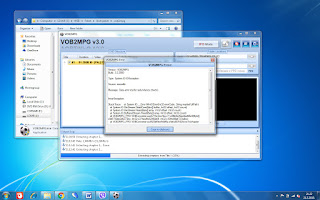Welcome to Golden 60's - Blog about DIY restoration of old video materials
What is all this about?
In the last 50 years I have filmed a bunch of different audio and video materials (8mm films from the 60s, VHS, Video8 and DVDs). In this form videos are not simple to watch. They just take place in the closet and collect dust.
Another problem that I have is that some devices for watching those clips are already technically outdated and maybe even broken.
And with time, they're not getting any younger. 😁
So what did I do?
I have decided to transform the recorded material into a format acceptable for archiving and watching on TV or any other device that can play mpg2 format.
My idea is to process them and make "My video album" or video/photo album.
My idea is to process them and make "My video album" or video/photo album.
Normally, all the material can be archived and viewed by some archiving program installed on your computer, but I have decided to create an old-fashioned album. In this form, it will be more comfortable to browse.
Each page will include some characteristic video images and an SD memory card with video material.
Another reason for doing this is that the material obtained this way can be organized by the time of the events, a venue, a location, a main actor and other actors, and sometimes even stunts.
This way you can easily share it with people that are dear to you, create some nice greeting cards or even short films.
It all depends on your affinities and time.
Since this is a one-time assignment (I do not plan to become a professional), I've been researching how to implement my plan in as simple and as cheap way as possible.
I have divided the procedure into phases and started working on them step by step.
Phase 1 - Video Transfer
Old 8mm films and similar materials were transferred to DVDs, and then converted them to digital format for further processing.Phase 2 - Identifying and "clipping"
The material should be reviewed, cut and remove "garbage" to be suitable for archiving. Clipping is necessary if you want to create your own organized video archive.Since a single video roll can contain up to 90 minutes of video, in my case there is a lot of different stuff on it, from the local carnivals, the summer vacations, harvests, to birthdays and everything all over again.
Phase 3 - Video processing and enhancements
This is optional, and done only if necessary. This includes cleaning away damage done to the film caused by time, poor equipment, everyday handling or some other causes. You want to get the maximum out of you material.Of course this is all about computer processing of the video clips. Luckily there is enough freeware on the Internet and enthusiasts who are willing to share their knowledge and experience. This way it is possible to gain something really worth keeping from materials that are in quite a bad shape.
All the freeware I used to process my materials are packed into one zip file, so those who are interested in this matter would not have to jump all over the Internet to look for the required tools. This was done completely in accordance with the licences provided by their respective owners.
Since there are always those who are looking for more, there are links from which they can begin their training. We will talk about this more later on.
Phase 4 - Distributing and archiving. Everything done thus far was work and this is going to be fun. This is where your creativity comes in. This is where you get to show who you are.
Let's get going...




Comments
Post a Comment